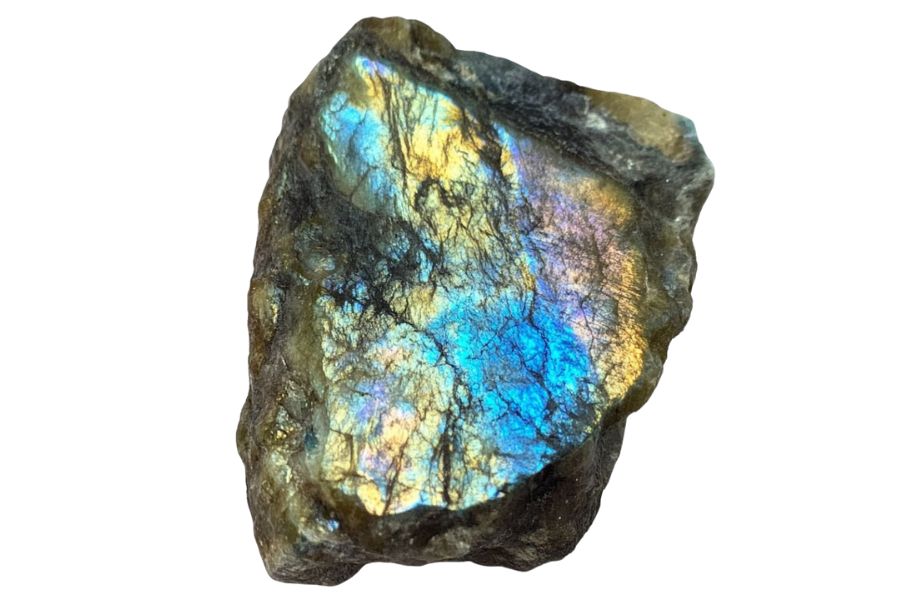California’s rocky terrains hide some of Earth’s most magical stones. Among them lies Labradorite, a crystal that flashes brilliant blue and green when light hits it just right.
Native Americans believed these shimmering stones contained the frozen fire of the northern lights. Today, rockhounds and crystal collectors travel across the state’s mountains and coastal areas to find these beautiful specimens.
The state’s volcanic past created perfect conditions for Labradorite formation. You’ll spot these gems tucked away in ancient lava flows and scattered through mineral-rich deposits.
From beach pebbles to large crystal chunks, California’s Labradorite comes in all sizes and colors. You’ll get everything you need here to track them down, and the only extra thing that truly helps is Rock Chasing’s California Rocks & Minerals Identification Field Guide.
It saves a lot of time and keeps you from walking past something valuable without realizing it.
How Labradorite Forms Here
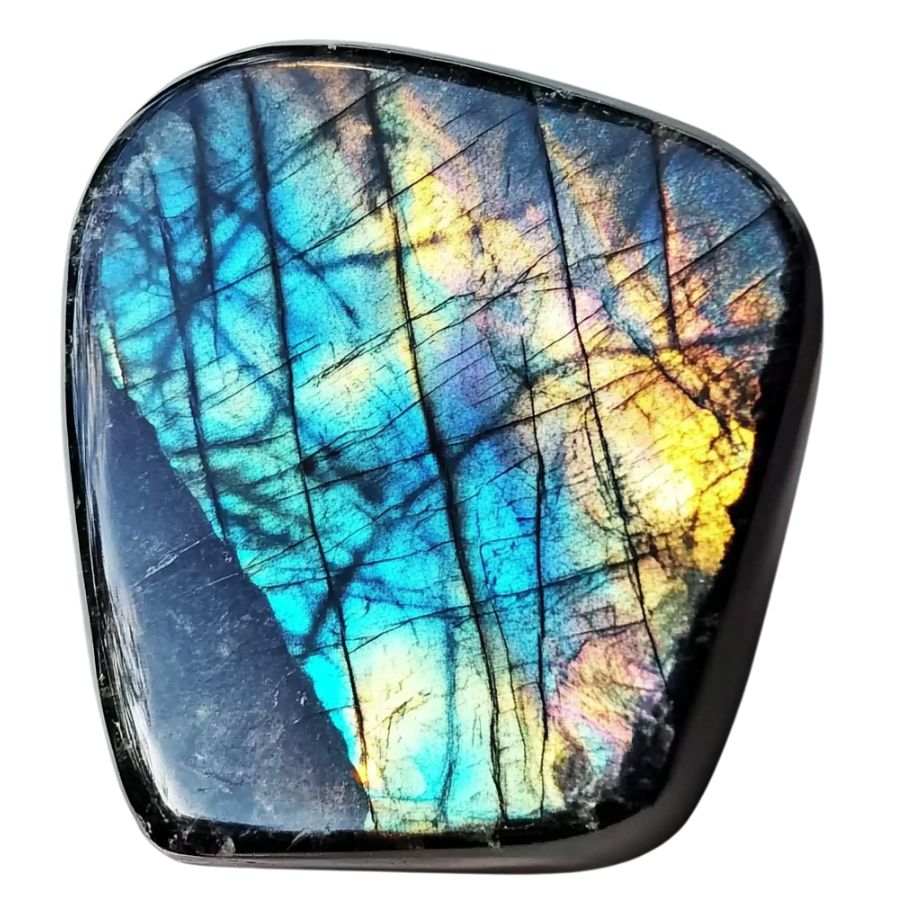
Labradorite forms deep underground when magma slowly cools and crystallizes. The process happens when different minerals separate while cooling, creating thin layers stacked on top of each other. These layers have slightly different chemical makeups, usually about 1 micron thick.
When light hits these layers, it creates that stunning blue-green flash we love, called labradorescence. The stone starts out as a mix of calcium, sodium, aluminum, and silicate minerals.
As it cools, these minerals organize themselves into this layered pattern, which happens most often in places where magma intrudes into the surrounding rock. It’s like nature’s own light show, frozen in stone.
Types of Labradorite
Labradorite comes in several distinct varieties. Each type exhibits special qualities that make it sought after by collectors.
Blue Labradorite
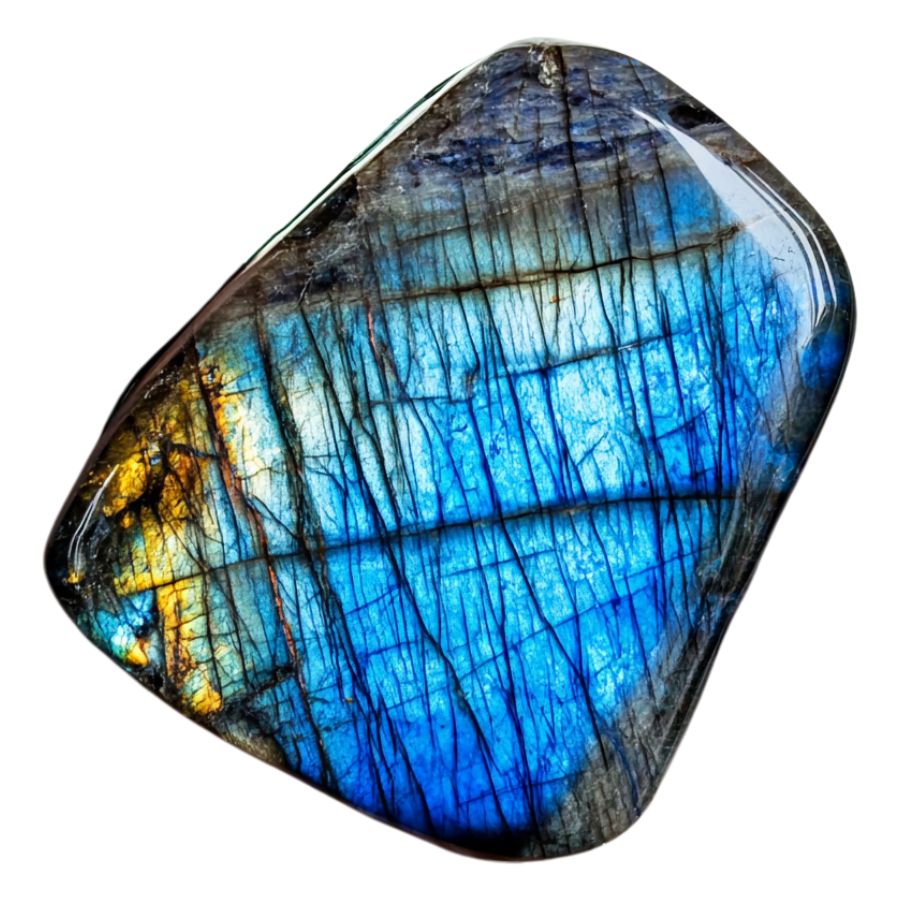
Blue Labradorite stands out for its remarkable blue iridescence against a dark gray or black background. When light hits the stone’s surface, it creates a stunning display of electric blue flashes, sometimes accompanied by hints of green or violet.
The blue flashes appear most vivid when viewing the stone from specific angles, creating an almost magical transformation as you rotate it. This effect is often compared to the ethereal beauty of the Northern Lights.
Exceptional specimens display an intense, electric blue flash that covers a large portion of the stone’s surface. Some pieces also show secondary colors like aqua or sea green, adding depth to their visual appeal. The contrast between the dark base and bright blue flashes makes each piece unique.
Most people don’t realize how many incredible rocks California hides in its mountains, deserts, and beaches. This guide shows exactly what you’ve been walking past.
🌈 300+ color photos of real California specimens
🪨 Raw + polished examples make identification simple
🏜️ Covers coastlines, gold country, Sierras & more
💦 Waterproof pages built for real outdoor use
Golden Labradorite
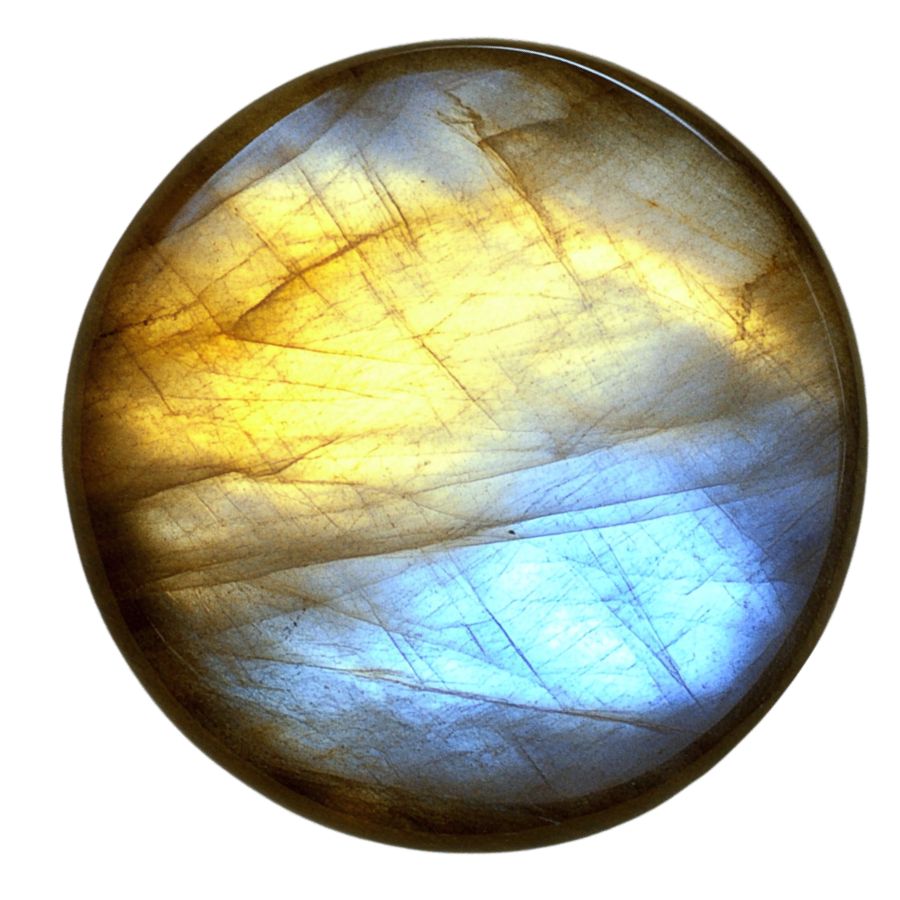
Golden Labradorite displays a mesmerizing golden-yellow sheen that sets it apart from other varieties. The stone’s surface exhibits brilliant flashes of gold and amber, creating a warm, sun-like glow that seems to emanate from within. These golden rays often appear alongside subtle hints of green or champagne colors.
What makes Golden Labradorite special is its ability to display multiple golden hues simultaneously. Some specimens show a range of colors from pale yellow to deep amber, creating a multi-dimensional effect.
The golden flash can vary in intensity and coverage, with premium specimens showing broad, bright areas of gold schiller.
Rainbow Moonstone
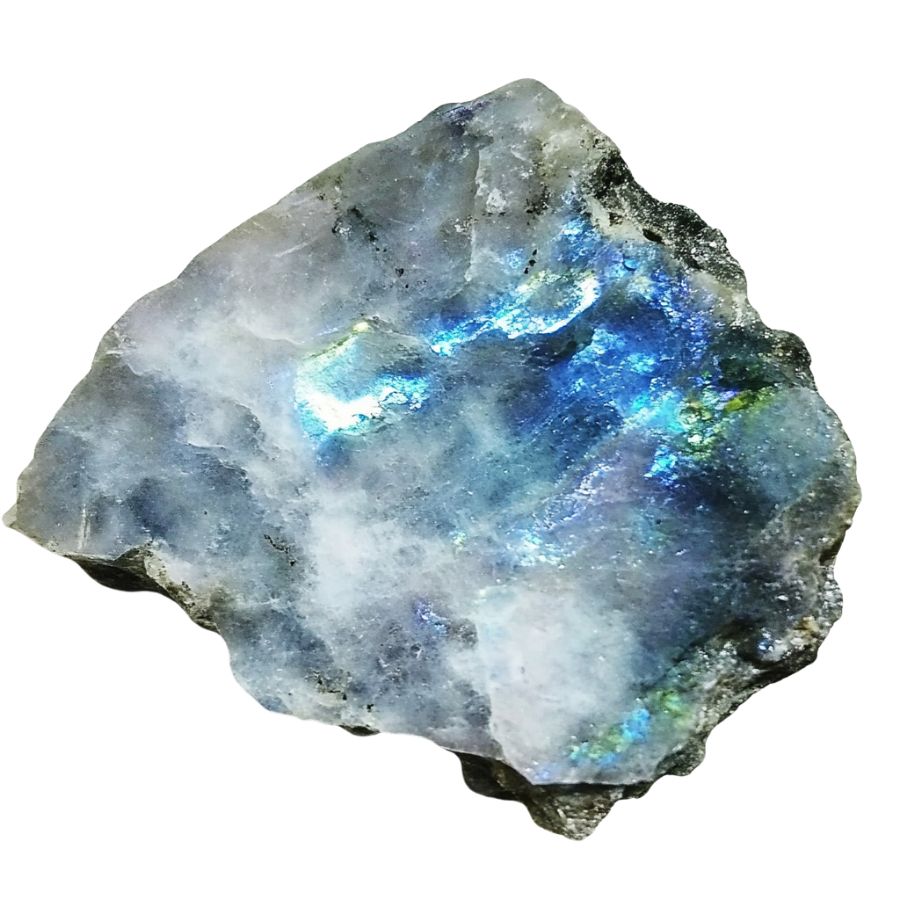
Rainbow Moonstone Labradorite exhibits a distinctive white or colorless base with an enchanting blue sheen that floats across its surface. Blue sheen is often accompanied by flashes of other colors, including pink, yellow, and green.
This stone’s most captivating feature is how its colors appear to float just beneath the surface, creating an almost three-dimensional effect. As light moves across the stone, these colors shift and change, revealing new patterns and combinations. This creates a dynamic display that seems to change with every movement.
The stone’s transparency can range from translucent to semi-transparent, with the most valued pieces showing excellent clarity beneath their shimmering surface.
Spectrolite
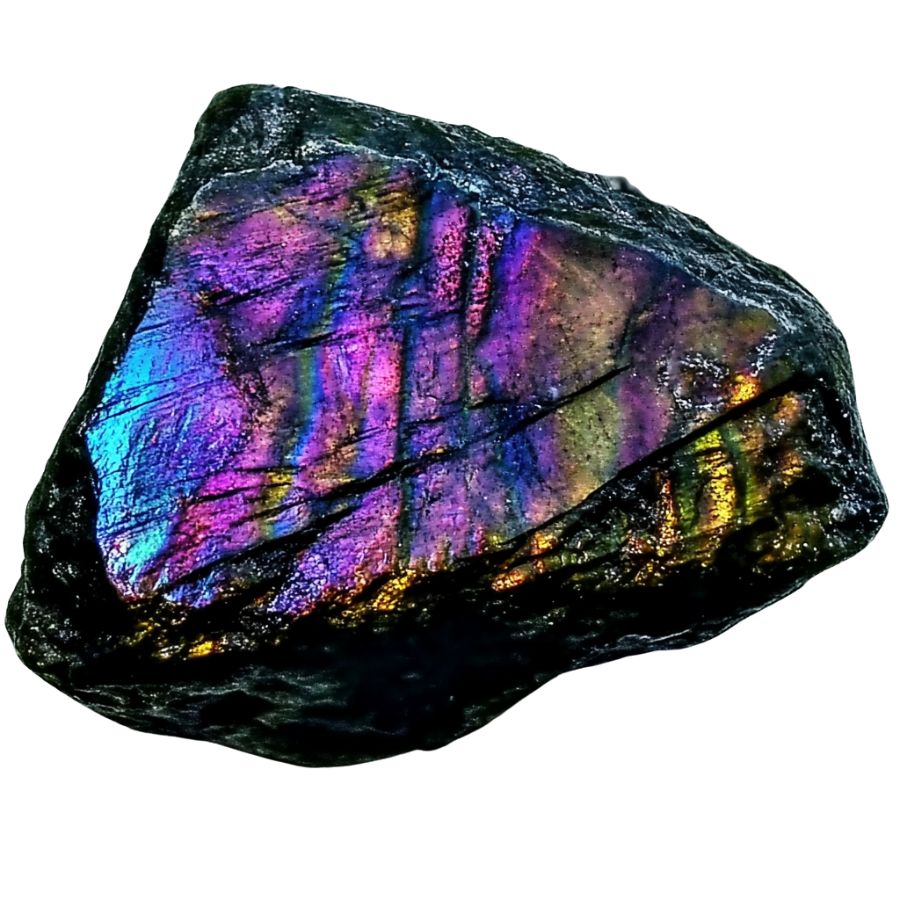
Spectrolite reigns as the most dramatic member of this stone family, with its distinctive jet-black base setting it apart from other varieties.
What makes it truly special is that premium specimens can simultaneously display the complete spectrum of colors, from deep indigo to bright orange, emerald green to royal purple, all in a single piece.
The finest specimens possess what experts call “full-face color,” meaning the vibrant display covers most of the stone’s surface rather than appearing in small patches.
This characteristic, combined with its remarkable color intensity, has earned Spectrolite its reputation as the most visually impressive variety of all similar stones.
Transparent Labradorite
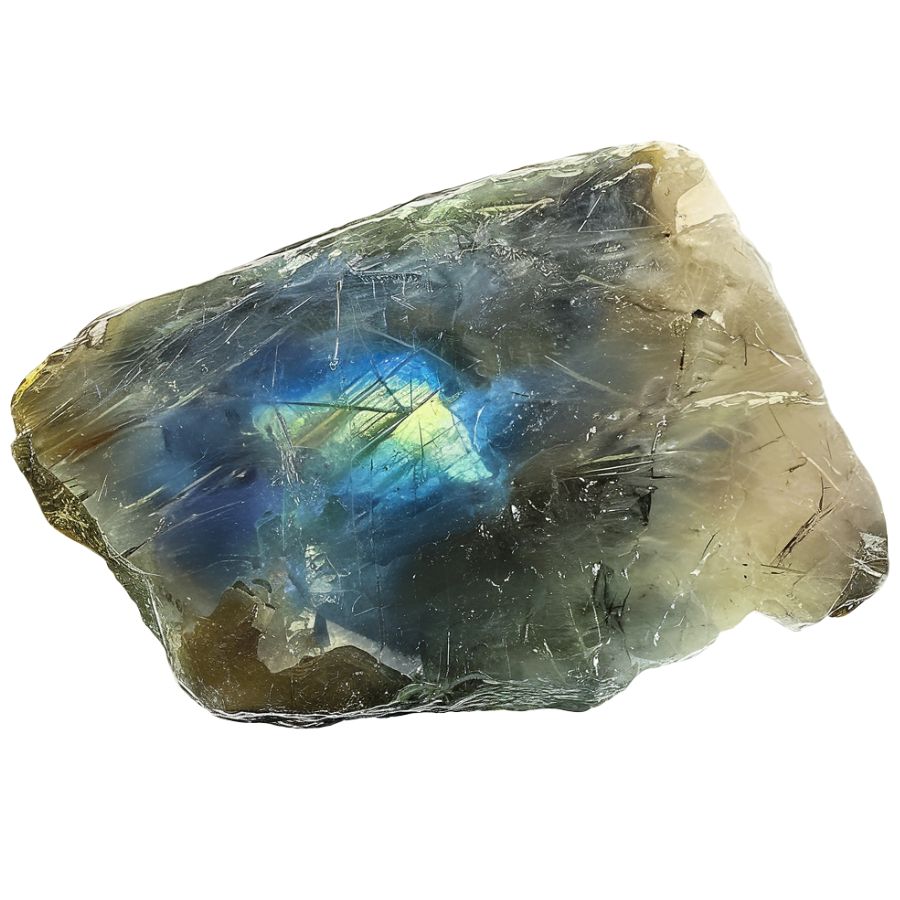
Transparent Labradorite exhibits a remarkable clarity that separates it from its opaque cousins. Crystal-clear areas allow light to pass through, creating an exceptional display of blue flashes against the transparent background.
Natural specimens often show areas of both transparency and translucency. Beautiful color changes occur as you move this stone, with the transparent areas revealing subtle blue sheens that seem to float within the crystal.
Some pieces display additional colors like soft greens or pale yellows, though the blue flash remains dominant.
Remarkable clarity combines with the signature color play to create stones that appear almost liquid-like.
Andesine-Labradorite
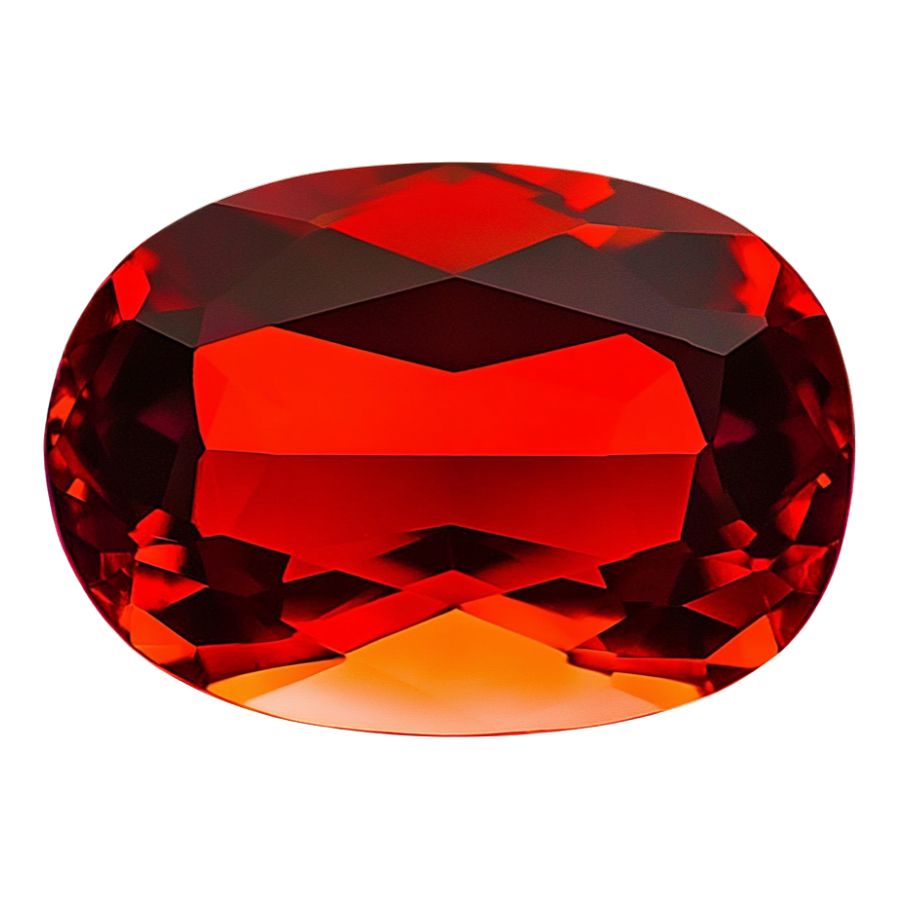
Reddish-orange hues dominate Andesine-Labradorite’s appearance, creating a warm and inviting glow. Delicate green and yellow streaks often appear throughout the stone, adding complexity to its color palette.
Metallic sparkles dance across the surface, different from the typical labradorescent effect. Fresh discoveries of this relatively new gemstone continue to reveal new color combinations.
Striking color variations appear in high-quality pieces, ranging from deep red to bright orange. Many specimens show subtle color zoning, where different hues blend together in distinct patterns.
Black Labradorite
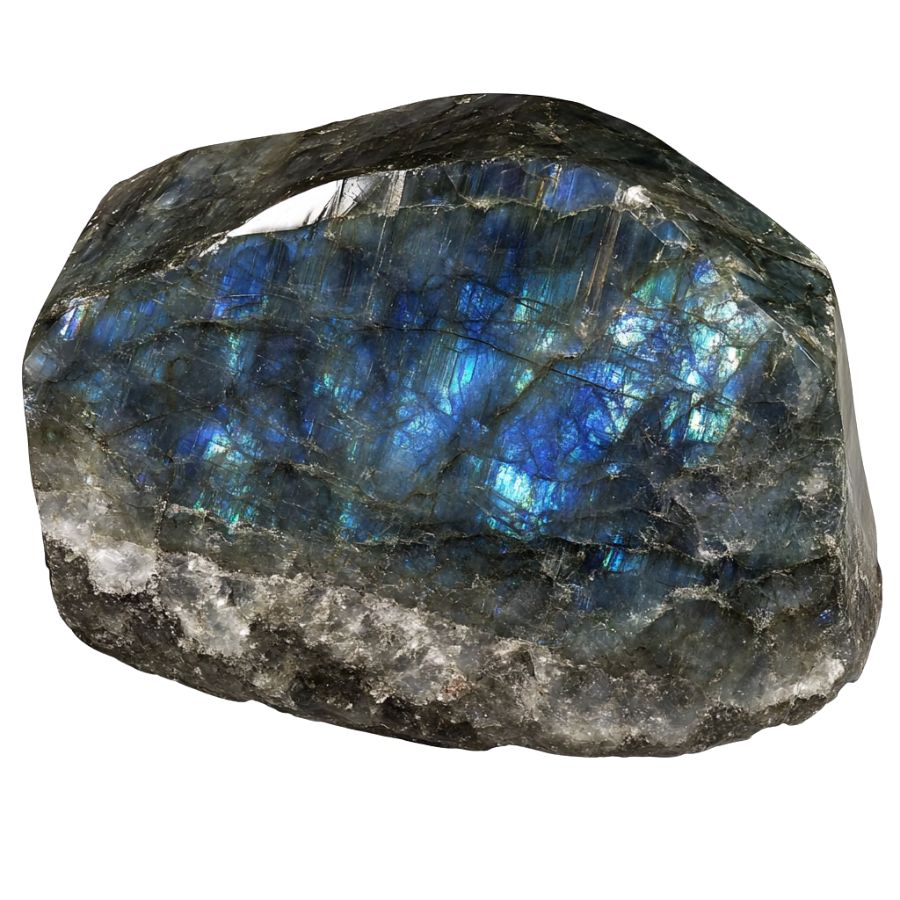
Black Labradorite presents a dramatic dark canvas that emphasizes its colorful display. Bright flashes of color stand out dramatically against the deep black background, creating stunning visual contrast.
Most specimens show multiple colors at once, creating an eye-catching display. These color displays often include electric blues, emerald greens, and golden yellows, all visible simultaneously.
Natural sunlight brings out the boldest displays, while artificial light can highlight subtle color variations. Some specimens also show interesting patterns in how the colors are distributed.
Brown Labradorite
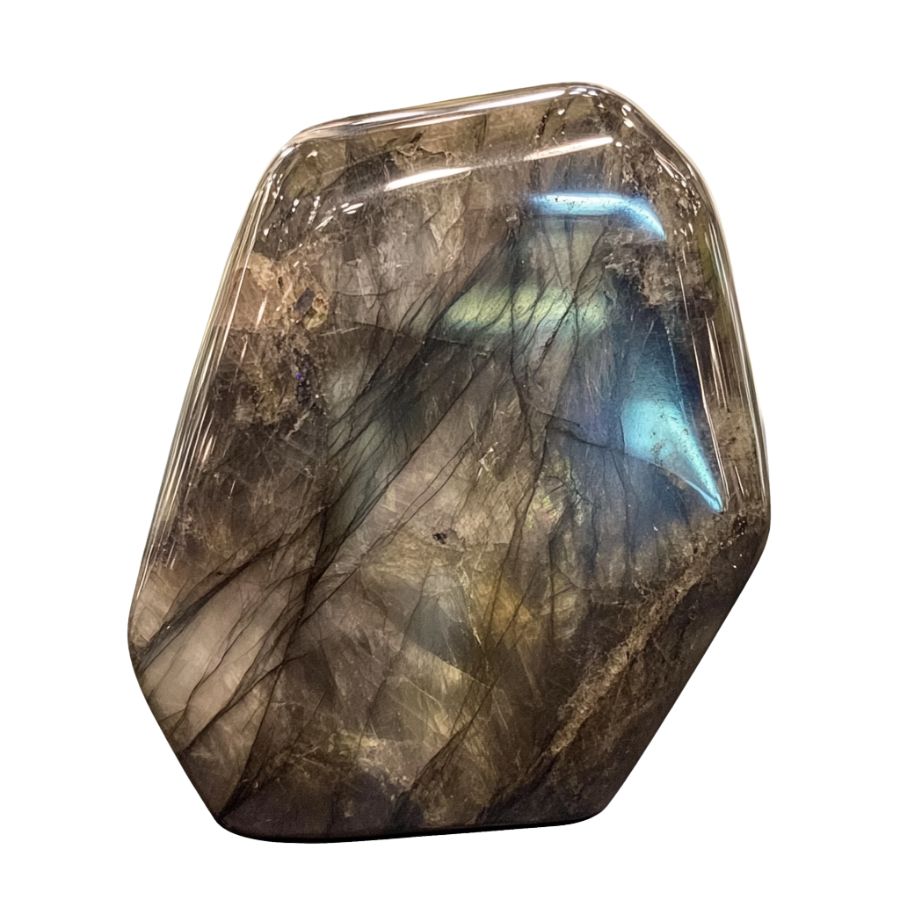
Brown Labradorite features rich earth tones ranging from deep chocolate to warm amber. Peach and orange undertones often appear throughout the stone, creating depth and dimension.
Multiple color zones create interesting patterns within each stone. These patterns can include stripes, swirls, or mottled areas that combine different brown and orange hues.
Subtle iridescence sometimes appears on the surface, adding an unexpected shimmer to the earthy colors. This effect is more subdued than in other varieties but adds an interesting dimension to the stone’s appearance.
What Rough Labradorite Looks Like
Labradorite in its rough form can be tricky to spot, but once you know what to look for, it becomes easier. Here’s how to recognize this fascinating stone in its natural state.
Look for the Signature Flash
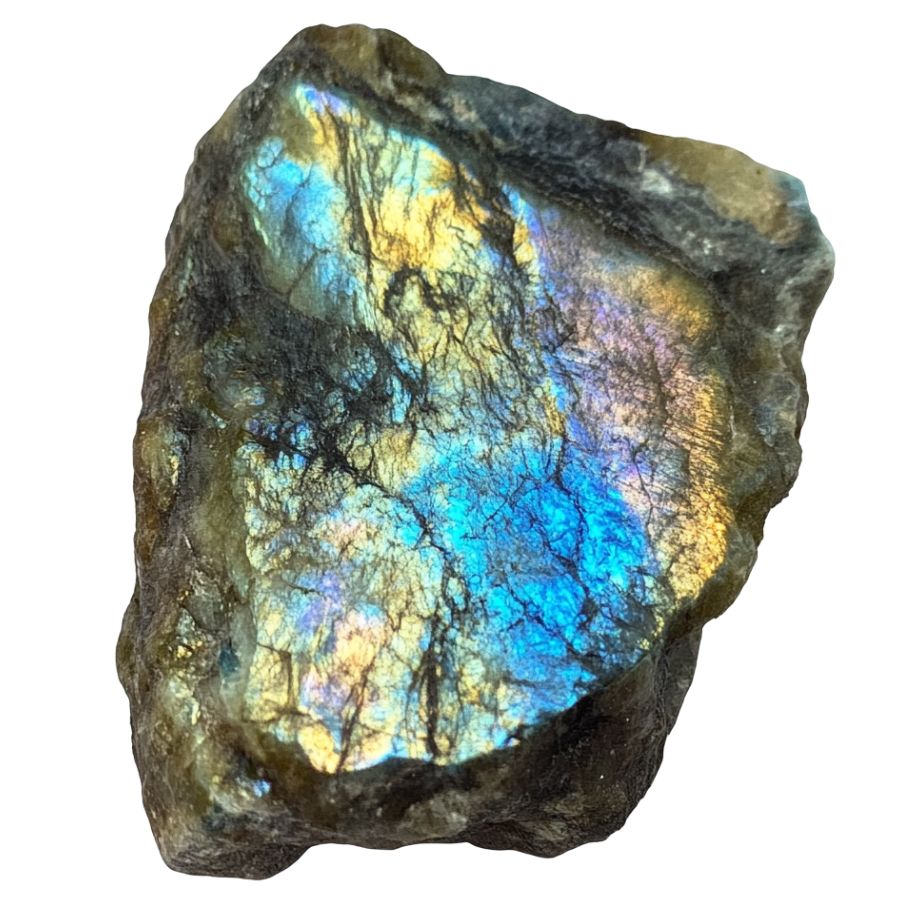
Raw labradorite often shows patches of its famous iridescent flash, even when unpolished. Check dark gray or black areas under direct sunlight – you might catch glimpses of blue, green, or gold shimmer.
Sometimes, you’ll need to wet the surface slightly to see this effect better. The flash isn’t always obvious but usually appears as scattered patches.
Check the Base Color and Texture
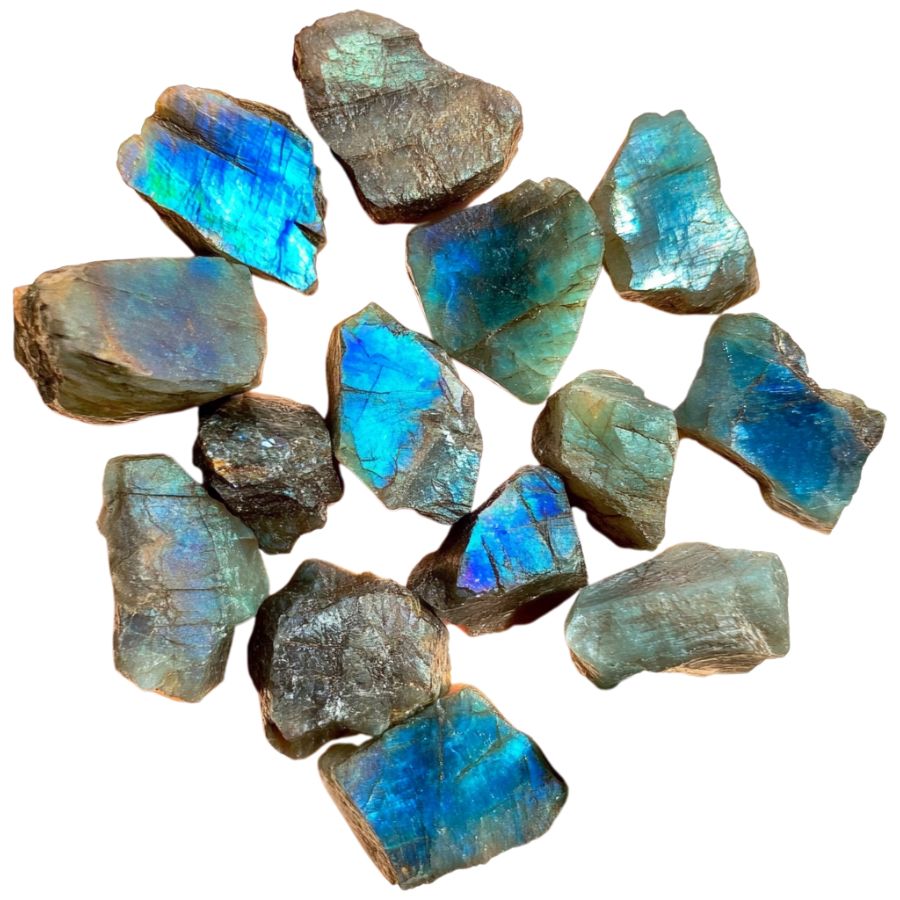
The main body should be dark gray to black, sometimes with a slight greenish tinge. The surface feels smooth but not glossy, similar to unpolished glass.
Look for a slightly bumpy texture with occasional flat surfaces. Fresh breaks will show a more uniform color than weathered surfaces.
Assess the Hardness and Breakage
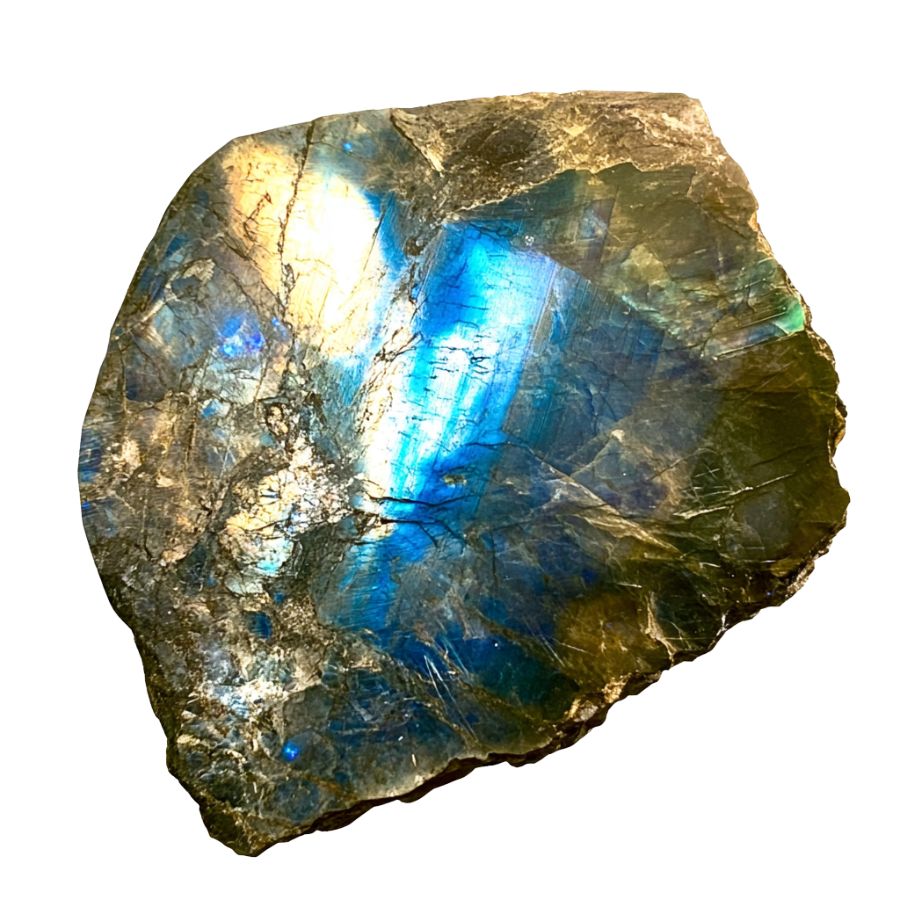
Try scratching the surface with a copper penny – it shouldn’t leave a mark. The stone often breaks with smooth, flat surfaces at distinct angles.
You’ll notice these angular breaks are pretty characteristic, unlike random rough breaks in common rocks.
Test the Translucency
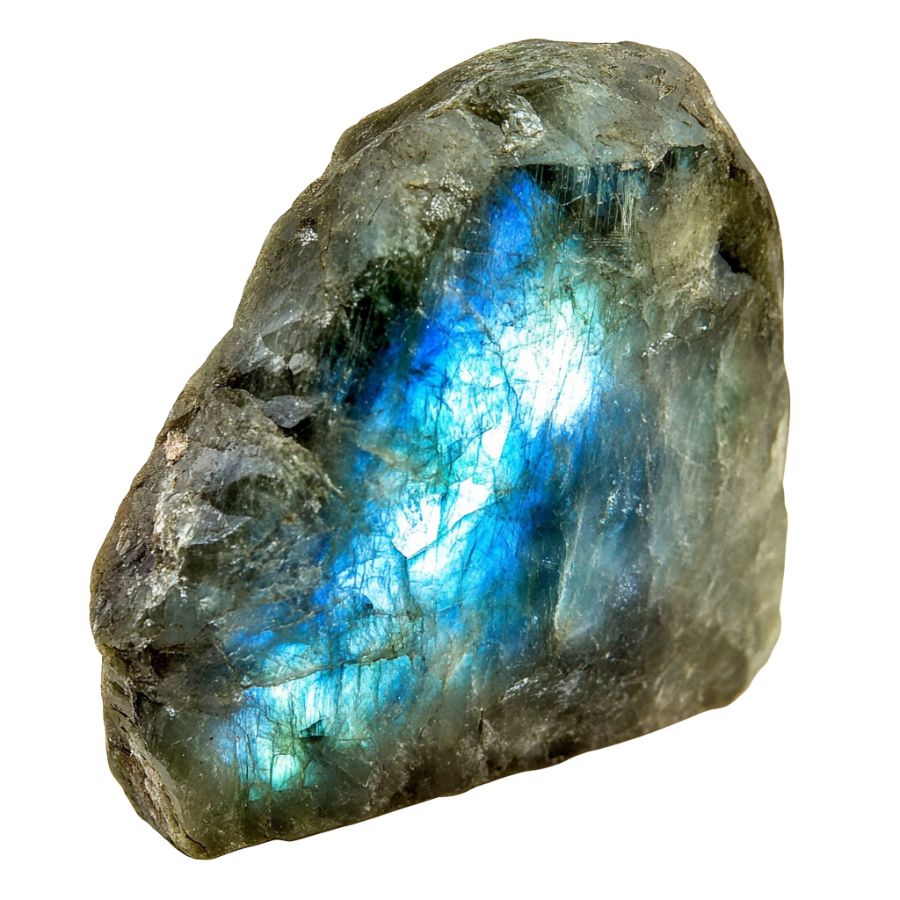
Hold a thin edge up to strong light. Raw labradorite should show some translucency, appearing slightly cloudy rather than completely opaque. The edges might look slightly whitish or gray when light passes through. Thicker pieces will appear darker and more opaque.
Tips on Where to Look
Labradorite isn’t super common in everyday places, but with some smart searching, you can find it. Here’s where you should look:
Metamorphic Rock Formations
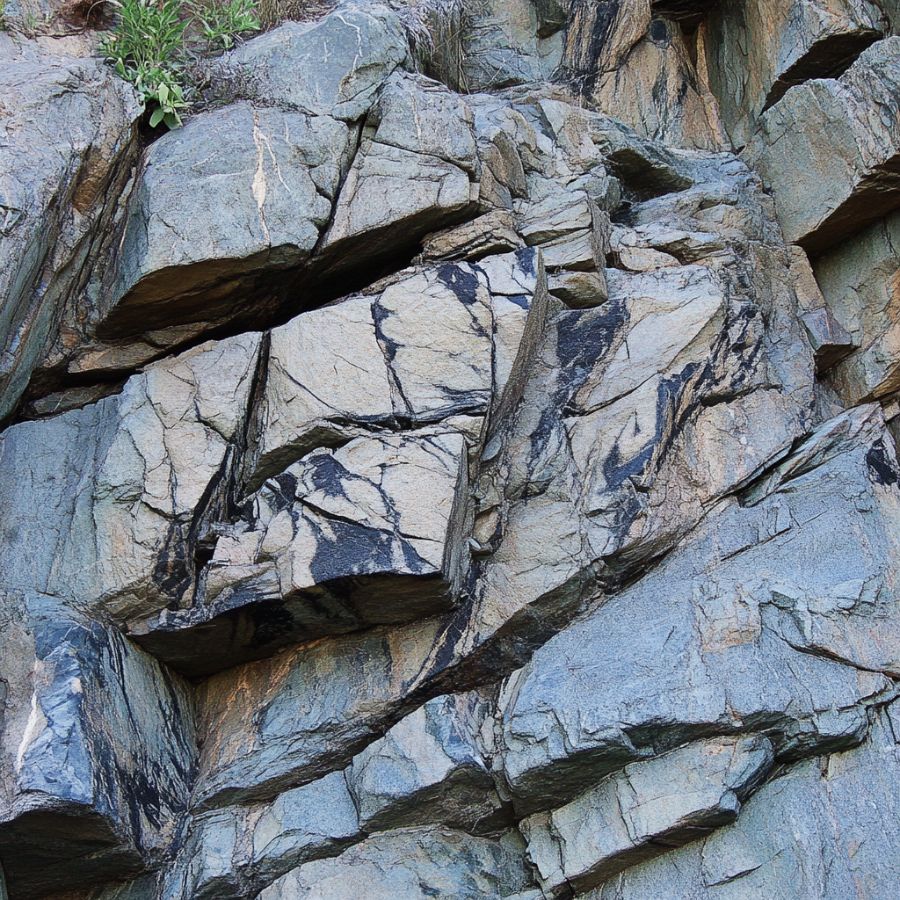
Look for dark-colored rock outcrops. Spot areas with lots of feldspar minerals. Check exposed cliff faces. Sometimes, when the sun hits just right, you might catch that signature blue flash from larger formations that’s a dead giveaway for labradorite presence.
Glacial Deposits
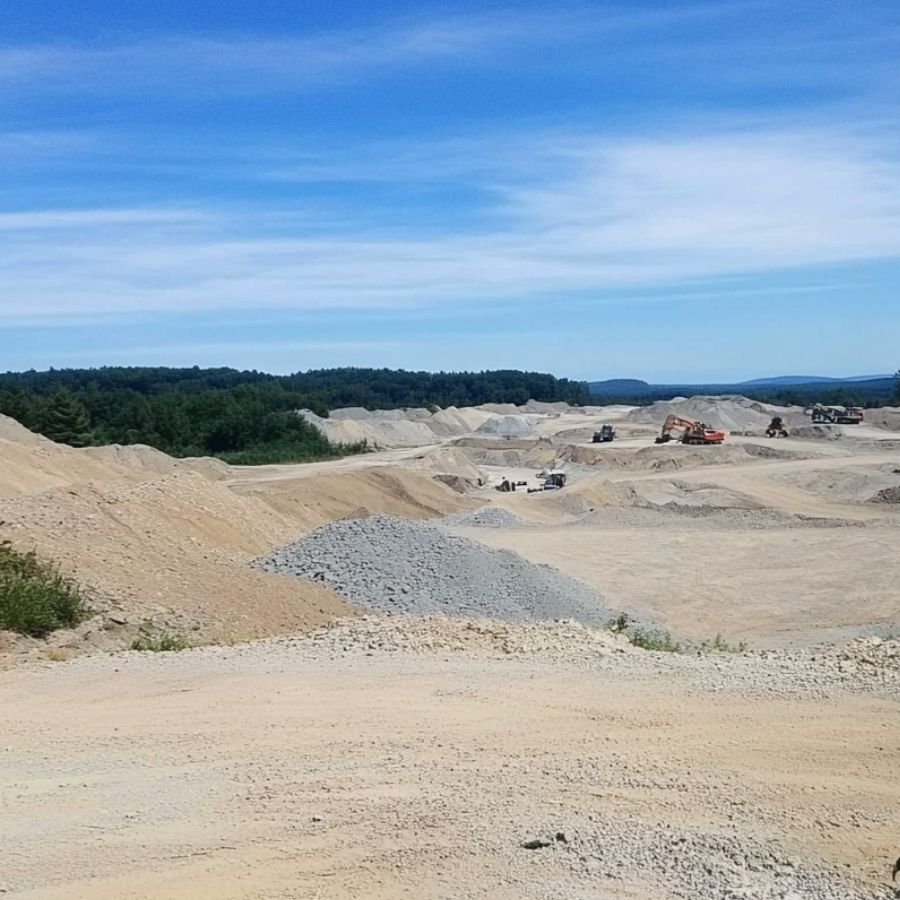
Search river beds after glacial deposits. Check gravel pits near old glacial paths. Look for smooth, dark gray stones mixed with other rocks. These deposits often contain chunks of labradorite that have broken off from larger formations and been carried downstream over thousands of years.
Mining Tailings
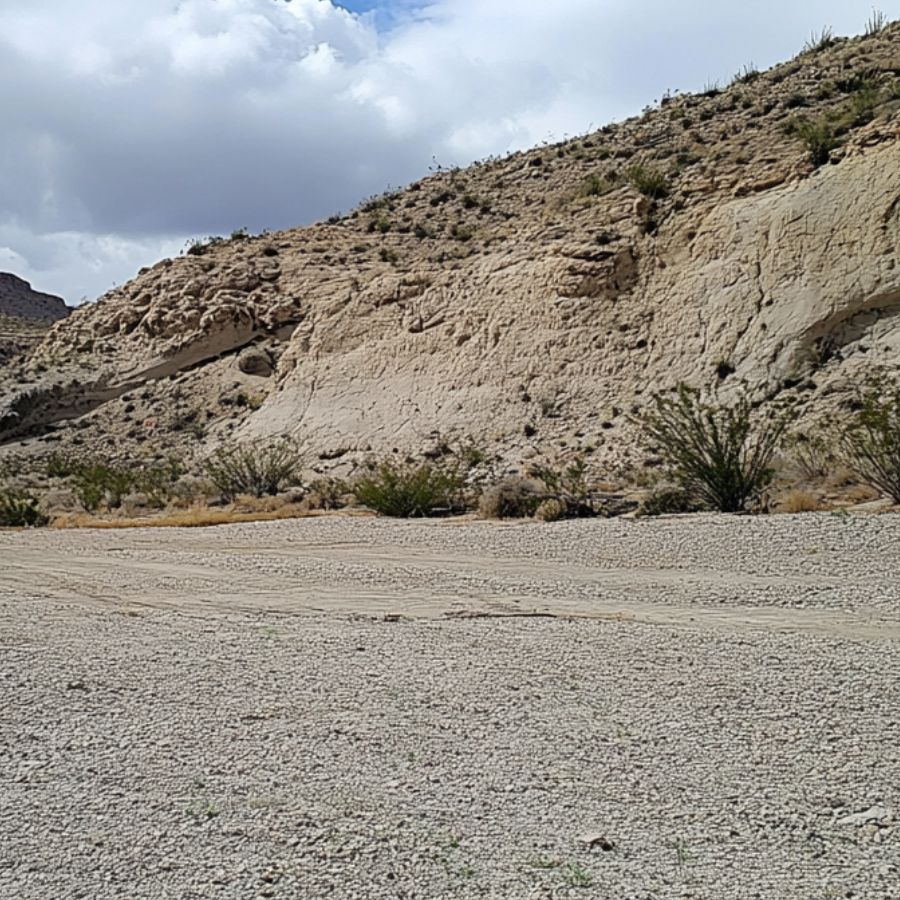
Visit abandoned feldspar mines. Check mine dump areas. Dig through tailings piles. Look for flat, shiny surfaces. The waste rock from old mining operations often contains overlooked pieces of labradorite that weren’t considered valuable during active mining periods but are perfect for collectors.
Stream Beds
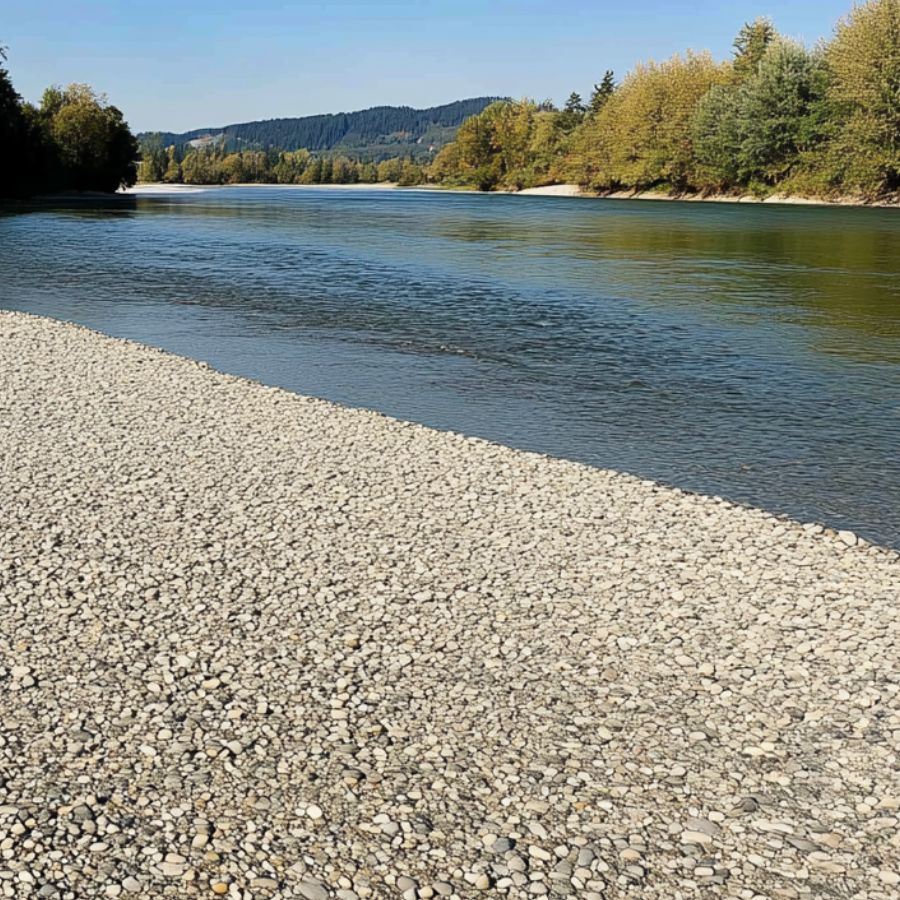
Search clear-water streams. Look under water-worn rocks. Check gravel bars after rain. Spot dark, plate-like stones. The constant water movement often exposes and polishes these stones, making them easier to identify when wet.
Tools You Will Need
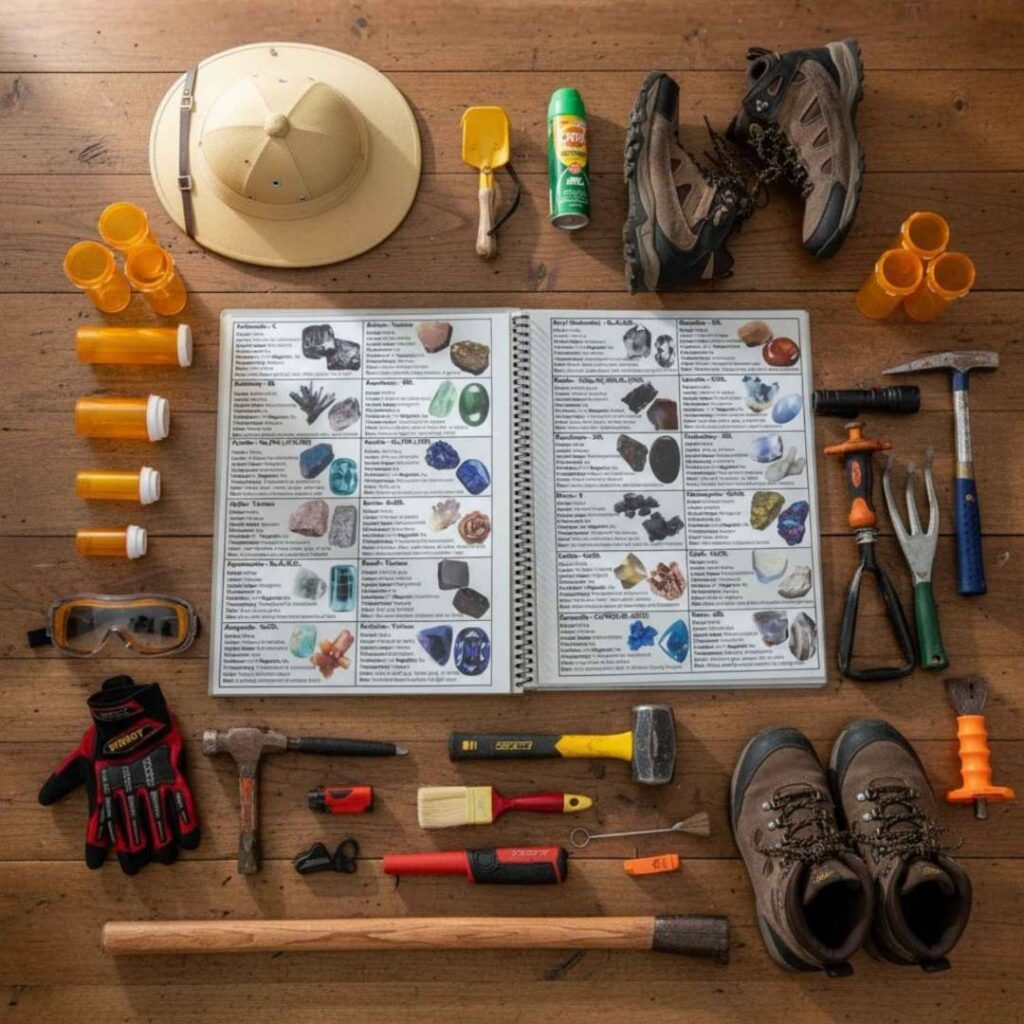
Labradorite hides in old lava flows and rough rocky spots, so having a few simple tools helps you spot the flashes of color without much effort. You do not need a big setup or fancy gear. A small kit makes it easier to dig, check the stones, and carry your finds safely.
A Trusted Field Guide – Essential
Rock hounds who spend their time chasing new finds know how much easier a trip becomes when identification is quick and clear. Having a guide with simple visuals and fast facts means you can cut down on guesswork and avoid spending hours trying to figure out what you picked up.
Rock Chasing’s California Rocks & Minerals Identification Field Guide provides more than 120 rocks and minerals along with over 300 photos, all arranged in a way that makes identification straightforward anywhere in the state.
It’s built to handle real field conditions, with laminated, waterproof pages and a solid steel binding that stand up to mud, creek spray, and dust.
It becomes essential for anyone who wants smoother trips and more confident collecting. The detailed photos and verified information help with labeling and organizing finds, while the bright images and fun facts make it easy for kids to join in.
Rock Hammer – Essential
A rock hammer helps you break apart small pieces of weathered basalt or loosen stones that are stuck in cracks. It gives you enough control to chip around a piece without damaging the colorful surface. Beginners will use it often when searching near old volcanic fields.
Safety Glasses – Recommended
Safety glasses protect your eyes when you tap or chip at the rock. Little shards can fly off in any direction, so wearing glasses keeps you safe while you work. They are light to carry and easy to forget, but they make a big difference during long days of collecting.
Field Pouch – Essential
A simple pouch keeps your labradorite pieces safe and easy to reach. It helps you separate rough finds from anything fragile and prevents your pockets from filling with dust and grit. It also lets you keep track of your favorite pieces instead of losing them in your pack.
Small Flashlight – Optional
A small flashlight can help you spot the flashes of color in low light or shaded areas. Labradorite sometimes shows its best colors when light hits it from the right angle. It is not something you must bring, but it can make the hunt more fun and help you notice pieces you might have missed.
Some Great Places To Start
Here are some of the better places in the state to start looking for Labradorite:
Always Confirm Access and Collection Rules!
Before heading out to any of the locations on our list you need to confirm access requirements and collection rules for both public and private locations directly with the location. We haven’t personally verified every location and the access requirements and collection rules often change without notice.
Many of the locations we mention will not allow collecting but are still great places for those who love to find beautiful rocks and minerals in the wild without keeping them. We also can’t guarantee you will find anything in these locations since they are constantly changing.
Always get updated information directly from the source ahead of time to ensure responsible rockhounding. If you want even more current options it’s always a good idea to contact local rock and mineral clubs and groups
Jackson Butte
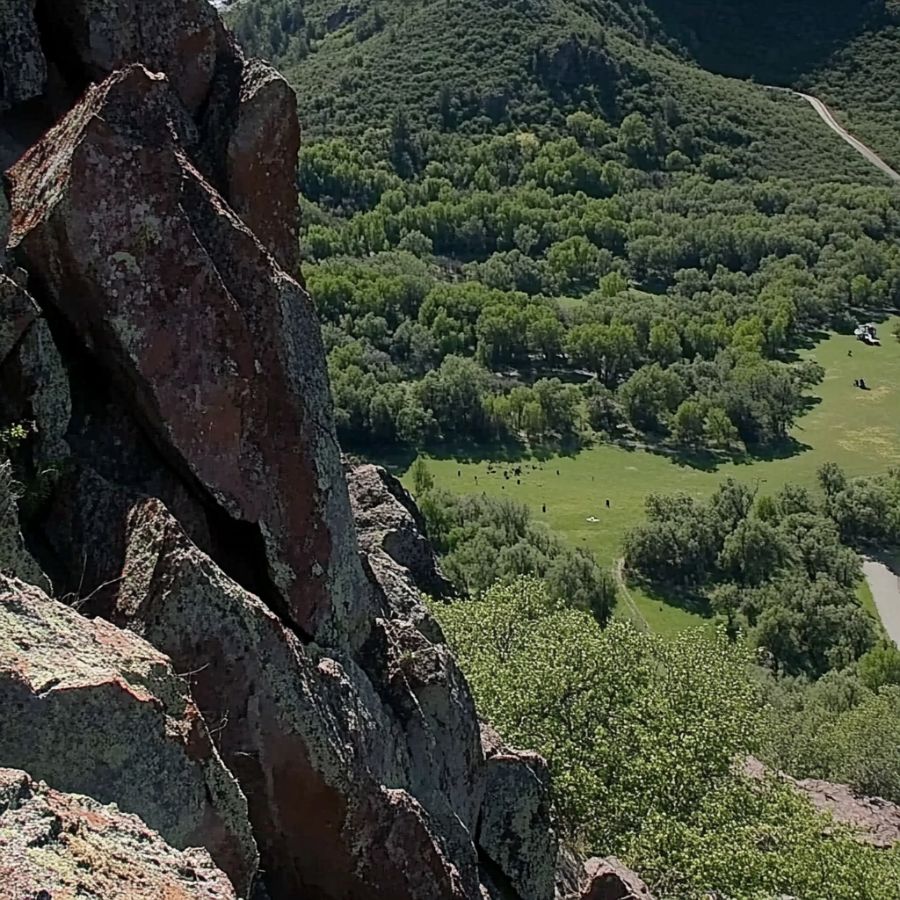
Jackson Butte is a mountain peak near the town of Jackson in Amador County. The peak rises 2,297 feet above sea level, with the Mokelumne River flowing along its southern edge.
This area is part of California’s famous Gold Country, where many people once searched for gold. Natural granite outcrops dot the mountainside, offering prime spots to search for labradorite crystals.
Many rockhounds focus their searches near the mountain’s base, where exposed rock faces show promising mineral deposits. River beds around the mountain contain gravel deposits that often yield interesting finds.
Local geology makes Jackson Butte special for mineral collectors. The area’s metamorphic rocks hold various minerals besides labradorite, including quartz and feldspar.
If your kids constantly ask “What’s this rock?”, this guide finally gives you an answer you don’t have to Google later. Quick photos, simple descriptions, and rugged pages make ID’ing rocks fun instead of frustrating.
🔍 Fast visual matching—no geology background needed
💦 Wipe-clean pages made for creeks, beaches & dirt
📚 Simple explanations for beginners of all ages
🌄 Great for California hikes, creek beds & camping trips
Saddleback Mountain
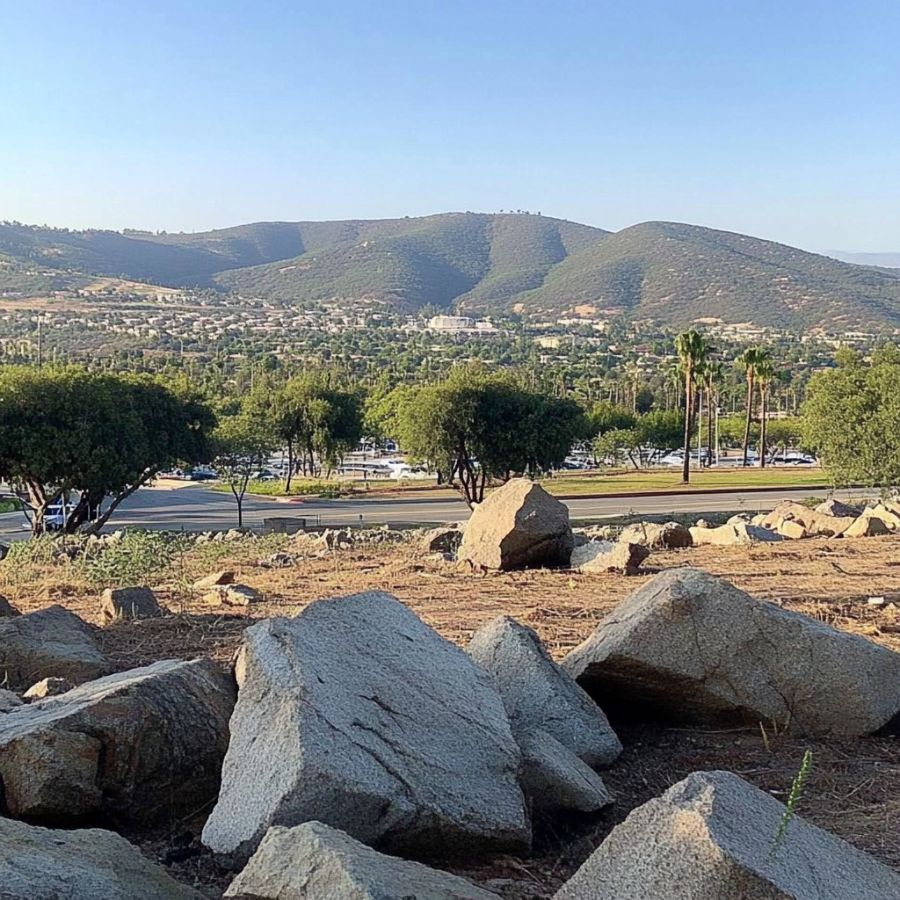
Saddleback Mountain rises 3,077 feet in San Bernardino County, just 4 miles southwest of Boron. This rocky peak is part of the East Kramer Borate area, making it special for mineral hunters.
Igneous rocks like basalt and gabbro cover much of the mountain’s surface. Old quarries and mine dumps on the mountain are great spots to search for Labradorite. The mountain’s unique geology creates perfect conditions for finding this shimmering stone.
Many rockhounds visit this site because of its rich variety of minerals. Besides Labradorite, you might discover other interesting minerals like pyroxenes and magnetite.
San Marcos Mountains
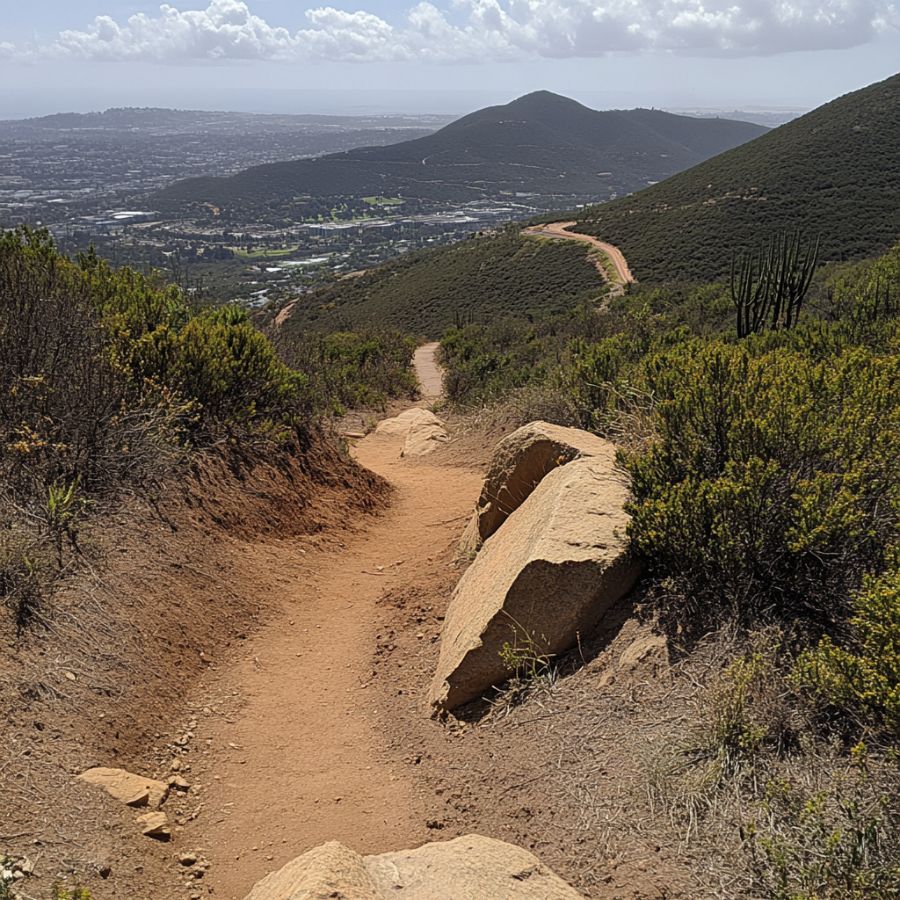
The San Marcos Mountains form a compact range in northwestern San Diego County. Dark igneous rocks throughout the area create perfect conditions for finding labradorite.
Rock collectors should explore the summit area, where large masses of gabbro and anorthosite rocks contain promising specimens.
Several old quarries around the mountains provide excellent hunting spots. Seasonal stream beds in the area often collect loose specimens that have washed down from higher ground.
Popular among local mineral clubs, this site offers year-round access. Early morning searches often yield the best results as sunlight catches the crystal’s famous blue flash. Beginning collectors can easily reach most hunting areas through established trails.
Modoc Area
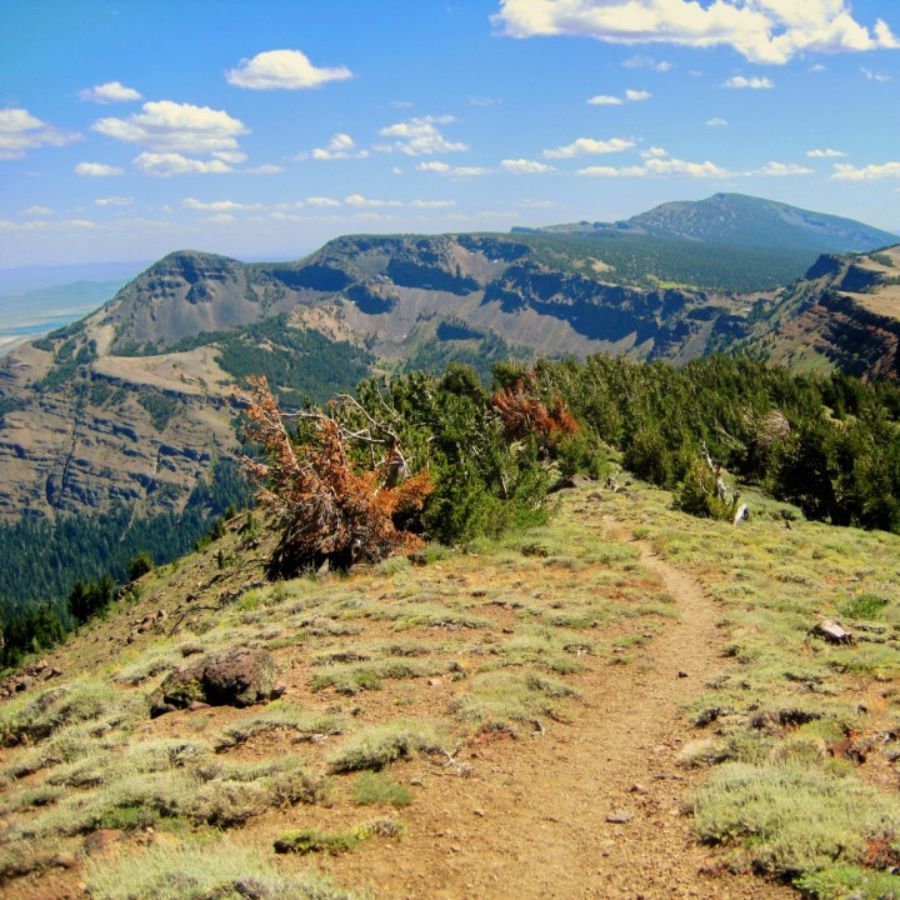
Modoc County sits in the far northeast corner of the state, where California meets Oregon and Nevada. This vast area features the Modoc Plateau, a large volcanic tableland that rises 4,000 to 6,000 feet above sea level.
Volcanic rocks rule this landscape, creating perfect conditions for finding labradorite. Rabbit Basin, in the southeastern part of the county, is a prime spot for finding labradorite crystals.
Local rockhounds often search the exposed volcanic rocks around the basin’s edges. Many successful finds have been reported in the weathered volcanic deposits. The stone pieces found here range from small specimens to larger chunks embedded in the volcanic rock.
Searching after rain can make it easier to spot the distinctive blue flash that makes labradorite famous. The area’s high elevation means weather can change quickly, so planning ahead is important.
Western San Gabriel Mountains
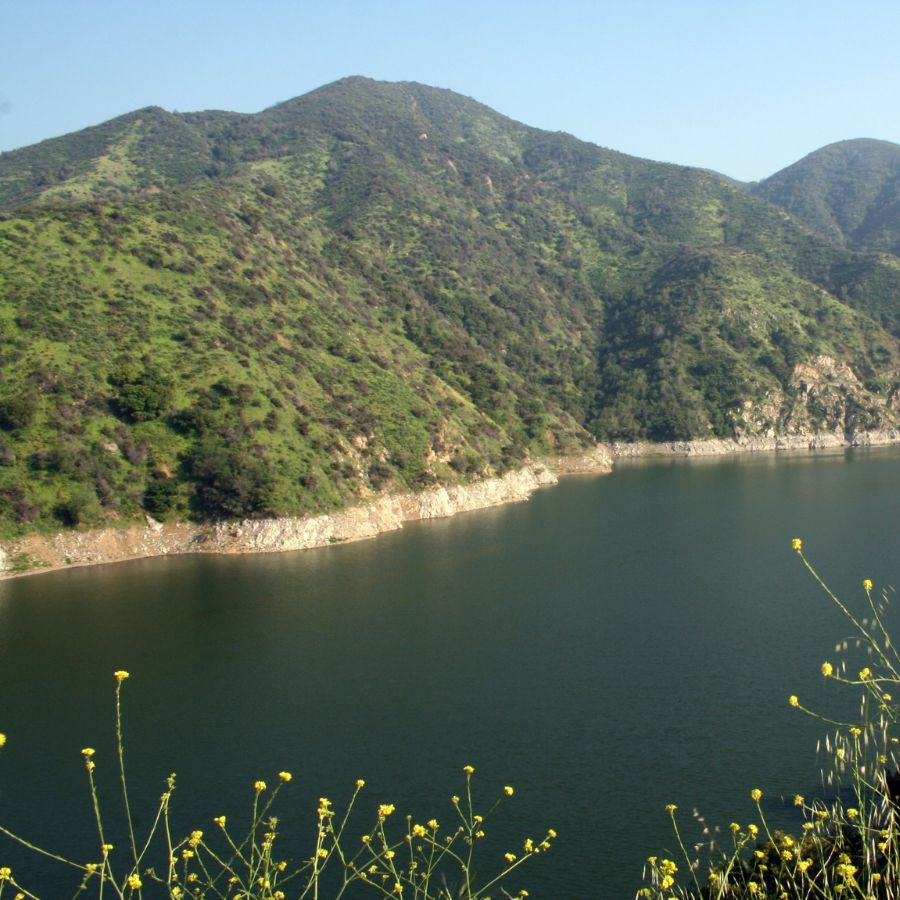
The Western San Gabriel Mountains stretch across northern Los Angeles County. These mountains sit between the Los Angeles Basin and the Mojave Desert. Peaks in this range reach heights of 7,000 to 9,000 feet, making them a striking sight.
Rock hunters often visit these mountains to find Labradorite in the anorthosite rock formations. Many pieces of this shiny, color-changing stone have been discovered near the Mendenhall Gneiss outcrops.
Large crystals of Labradorite can be spotted in the rocky areas where igneous and metamorphic rocks meet.
Mount San Antonio, also known as Mt. Baldy, stands as the highest peak in this range. Rockhounds can access several collecting areas through the mountain’s trail system.
Places Labradorite has been found by County
After discussing our top picks, we wanted to discuss the other places on our list. Below is a list of the additional locations along with a breakdown of each place by county.
| County | Location |
| Inyo | Little Chief Granite Dome |
| Kern | Kramer Borate Deposit |
| Los Angeles | Lady Face Ridge |
| Riverside | Sky Blue Hill |
| San Diego | Mesa Grande Mining District |

